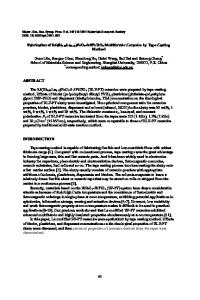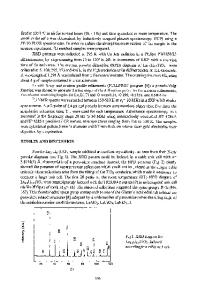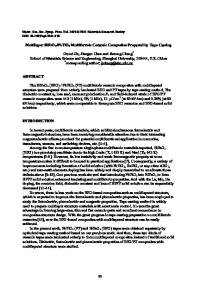One-step low-temperature synthesis of Li 0.33 La 0.55 TiO 3 solid electrolytes by tape casting method
- PDF / 920,538 Bytes
- 11 Pages / 595.276 x 790.866 pts Page_size
- 26 Downloads / 328 Views
ORIGINAL PAPER
One-step low-temperature synthesis of Li0.33La0.55TiO3 solid electrolytes by tape casting method Yi Huang 1 & Yue Jiang 1 & Yuxi Zhou 1 & Xin Liu 1 & Xiangming Zeng 2 & Xiaohong Zhu 1 Received: 14 August 2020 / Accepted: 27 October 2020 # Springer-Verlag GmbH Germany, part of Springer Nature 2020
Abstract Li0.33La0.55TiO3 (LLTO) is a solid Li-ion conductor with high bulk ionic conductivity. However, a high processing temperature, typically around 1300 °C, is generally required for obtaining its crystallization. In this work, LLTO was successfully synthesized at temperatures as low as 900 °C by tape casting method. Thermogravimetric analysis was carried out on the precursors for clarifying the weight loss and related phase transformations, and powder X-ray diffraction analysis was performed on the final products for verifying the crystallinity and phase purity in the low-temperature-processed LLTO electrolytes. The morphology of the synthesized LLTO powders was observed by scanning electron microscopy for understanding the microstructural evolution with increase of the sintering temperature. The ionic conductivity and activation energy of LLTO solid electrolytes were measured. A typical ionic conducting behavior with a moderate total conductivity of 4.3 × 10−6 S/cm and a quite low activation energy of 0.29 eV was obtained in the 900 °C-derived LLTO sample. When the processing temperature was raised to 1350 °C, the total ionic conductivity was further enhanced, reaching 6.13 × 10−5 S/cm. When the LLTO pellets were subject to cold isostatic pressing, the low-temperature (900 °C)-processed LLTO sample also presented a high conductivity of 2.1 × 10−5 S/cm. This work sheds light on the low-temperature synthesis of LLTO-based solid electrolytes for solid-state lithium battery applications. Keywords Li0.33La0.55TiO3 . Solid electrolytes . Low-temperature synthesis . Tape casting method . Li-ion conductivity
Introduction With the continuous development of the world economy, the contradiction between energy supply and demand has become increasingly acute. At the same time, due to the wide use of coal, oil, and natural gas represented by fossil fuels, the resultant air pollution, haze, and other environmental problems have caused serious damage to human living environment. The development of solar, wind, and geothermal energy is therefore an inevitable trend of energy development. Supplementary Information The online version contains supplementary material available at https://doi.org/10.1007/s11581-02003823-y. * Xiaohong Zhu [email protected] 1
College of Materials Science and Engineering, Sichuan University, Chengdu 610064, China
2
Chongqing Sipat Owncore Technology Co., Ltd., Chongqing 400060, People’s Republic of China
Coherently, the development of efficient secondary energy storage devices is of great strategic significance for improving the energy structure, promoting the development of green energy, improving the utilization of resources, and solving environmental problems [1]. As an efficient sec
Data Loading...











